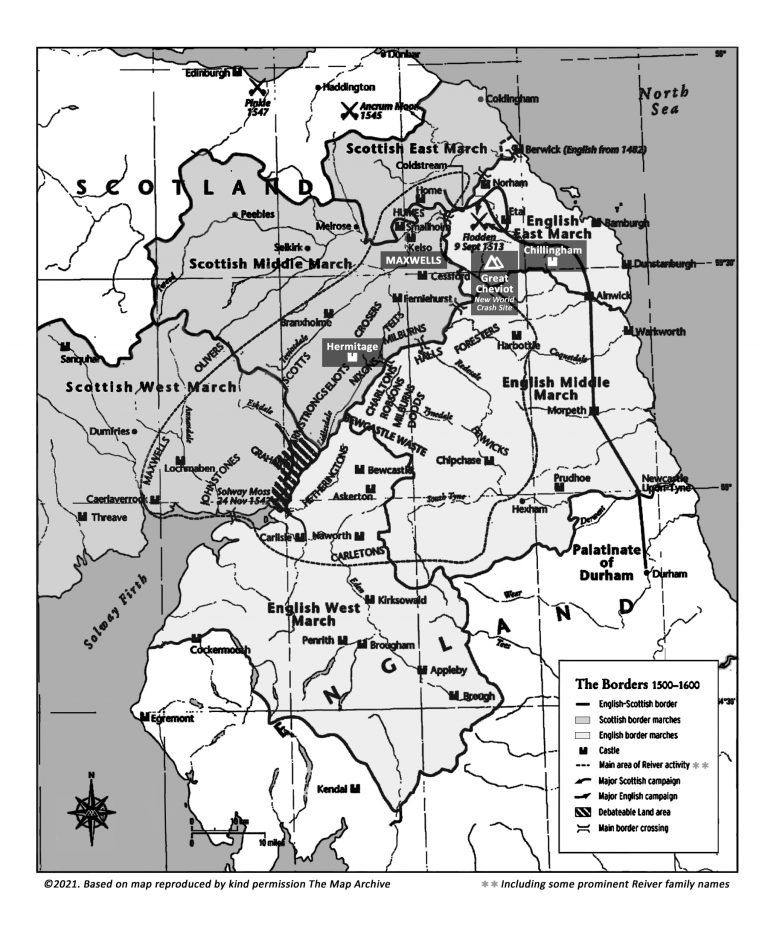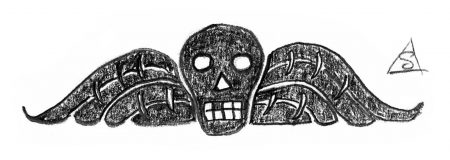A bit more about REROUTE
Author's Notes & Featured Creatures
MY GRATITUDE FOR THE INSIGHT
To everyone working in the field of natural history, dinosaur research, historical research and archaeology, I once again send a massive thank you for your constant inspiration.
As always, a few liberties have been taken…

ABOUT THE CREATURES & THEIR LOCATIONS
There were several spinosaurids around during the Cretaceous, Spinosaurus aegyptiacus being, of course, the most well-known thanks to a very popular film franchise! (To everyone with any knowledge of Tyrannosaurs, I still feel your pain!) In Patagonia, we also met Oxalaia quilombensis and Irritator challengeri. Some palaeontologists have postulated that Oxalaia may actually have been the same species as Spinosaurus, despite the thousands of miles and the beginnings of the Atlantic Ocean between them. Others state differences in the skull and snout – even in the density of the bones and probable musculature. Some believe Oxalaia was probably bipedal, like the ‘old’ Spinosaurus from the JPIII film.
These animals certainly seem to be the subject of intense debate currently. This story describes them as separate species because they are incredibly exciting creatures to write (or wrong) about. With regards to the true identities and appearances of these wonderful animals – I’m not touching that with a ten-foot pole! Instead, I chicken-heartedly hide under the comfort blanket of ‘fiction’ – that way I can tell naysayers to get a life, while secretly agreeing with them!
On our trip to Cretaceous Britain, we also meet Sigilmassasaurus brevicollis, another spinosaurid. Smaller than Spinosaurus, this was still a very large predator – as Aito Nassaki had a hand in finding out… (I can hear everyone groaning at that one, sorry).
Although discovered in North Africa, I theorise that these creatures ‘island-hopped’ due to their aquatic nature, eventually finding themselves on the ‘tropical’ landmass that would one day be Britain (it seems some things do change).

Carcharodontosaurus saharicus gave its name to the family ‘Carcharodontosauridae’ which also includes South America’s mighty Giganotosaurus carolinii and Mapusaurus roseae. Carcharodontosaurus was another Tyrannosaurus rex sized predator from North Africa, and was also discovered by Ernst Stromer during his time in Egypt, along with the famous Spinosaurus aegyptiacus and another large theropod predator named Bahariasaurus ingens.
The Allied bombing of the Old Academy, Munich, during spring 1944, destroyed Stromer’s finds, along with the type specimen for Bahariasaurus. Since then, arguments have been made for its inclusion within the Carcharodontosauridae, Tyrannosauroidea, Ceratosauridae and Megaraptora families!
We await more research and more lucky finds to get to the heart of this – maybe someone will put forward an argument for it being a fish? In the meantime, I think that a 12m long, fast, comparatively lightweight killer (approx. 4 tons) could make a nice but deadly addition to this series in the future.

Rugops primus, like South America’s Ekrixinatosaurus, was an Abelisaurid and a relative of the better known, but much later, Carnotaurus sastrei. Thought to be a North African scavenger, Rugops lived around the same time as the giant Carcharodontosauridae named above. This chap was probably around 4-6m in length and 500-750kg in weight with a comparatively weak jaw. As if it didn’t have enough problems in a land of truly huge and vastly more powerful predators, its vestigial arms would also have been fairly useless, AND its name means ‘wrinkle face’ – poor sod! However, like its cousin, Ekrixinatosaurus, Rugops was small enough to follow you through the trees – so you probably wouldn’t call him that to his wrinkled face!
CHARACTER TRAITS & ACCENTS
I receive quite a few comments from readers who love the way the characters speak with their own accents (and some hate mail on the subject, as well!) Personally, I believe it brings them off the page a little, while often providing some in-built humour, too.
However, with the 16th century characters, I’ve taken a few liberties (once again). Although communication would not have been impossible, anyone who has ever read Shakespeare knows that the dialect can, at times, be very difficult to understand, so much has the English language changed.
To that end, I’ve gone for a ‘feel’ of antiquity with the English and Scots dialects, trying where possible to remain true to the period but hopefully without making the characters’ words undecipherable – I apologise to the purists and once again hide under my comfort blanket of fiction.
Here – have a smiley face :o)

As far as I know, Elizabeth Tudor (soon to be Elizabeth I) was not in Northumberland during 1558. Most likely she was still ensconced within Hatfield House in Hertfordshire. However, Mary was often advised to have her half-sister removed from the succession (and the world). Elizabeth’s life hung by a thread on several occasions, especially during her youth, when her continued existence was often at the whim of another. Choosing between family or faith would probably be easy for most of us now, but for Mary it must have been the sorest of trials. She had little affection for her sister, as Elizabeth’s mother, Anne Boleyn, had supplanted her own mother, Catherine of Aragon, leading to her downfall. Worse, Elizabeth was a healthy, robust, soberly dressed protestant (in her youth) – at a glance, everything the dressy, Catholic queen was not.
However, one wonders whether Mary showed a side to her character at odds with her popular nickname ‘Bloody Mary’, by allowing her half-sister to live against her own interests. Especially at a time when state-sanctioned murder was not uncommon (though it was often known by other names, so as to pass muster according to the standards of Tudor political correctness). Her dilemma over bolstering the Catholic cause for the sake of England and her personal beliefs, or the sparing of her Protestant sister, must have been – to use an appropriate idiom – a heavy cross to bear. This fictional tale sees events altered by the arrival of the New World. However, I have tried to ingratiate my story within a semi-realistic framework of events from the period.
A BIT OF HISTORICAL CONTEXT
Historically, there was more than one Lord de Soulis. Sir William de Soulis (or Soules), the last, was actually Lord of Hermitage Castle in the Scottish Borders between 1318 and 1320. This was during the reign of Robert the Bruce and more than two centuries before the setting for this book. Regardless, I chose to include him because he was an extraordinary, ready-made ‘bad guy’.
Allegedly, he entered into a deal with Edward II of England to get rid of the Scottish King – he was certainly arrested for treason. However, the legend of Sir William de Soulis is probably more interesting than the reality. Either way, he seems to have been an extremely unpleasant fellow, even by medieval standards. Legend has it that William de Soulis was physically a large, powerful man, with prominent canine teeth and a predilection for extreme cruelty. He was almost universally loathed, or so the story goes, and talking of stories, many circulated that he was also a practitioner of the dark arts. His proclivity for taking young children from the countryside around Hermitage Castle and using them in evil rituals seems most unpleasant!
Apparently, De Soulis would summon his familiar, one ‘Robin Redcap’, during his rituals. According to British folklore, a redcap is a type of evil goblin, often tied to ruined castles in the borderlands. These chaps are known for the killing of travellers and local residents alike, so they can refresh the bloodstains on their hats – as the name Redcap suggests. The legend has it that if the bloodstains dry, the redcap dies. Redcaps were reputedly very quick and powerful. This series will always have dinosaurs at its heart, but even from inception, I always wanted to bring the story forward to include the 16th century borderlands and elements of the Hermitage Castle ‘horror story’. It seemed natural to write a dark spirit with a powerful attraction towards such a reputation – like the one created when Baines blew up a satellite in a Nazi pilot’s face – especially with a creature like De Soulis meddling with things he shouldn’t and opening the door.
Robin Rotmütze (redcap in German) tied in nicely with the legend of De Soulis and Hermitage Castle, and was too good to miss. Once summoned by De Soulis, the Robin Redcap of legend inspired terror in the lands around Hermitage, committing many atrocities. To escape a redcap, one must quote a passage from the Bible at it, whereupon it loses a tooth. (I wonder if Redcap regains his power if he remembers to put it under his pillow?)
Of course, it’s easy to mock superstition from the street-lit modern century, but William de Soulis seems to have been as dark as the thing he allegedly conjured. The story has it that in AD1320 he attempted to abduct a young woman belonging to the Armstrong clan. Her father tried to prevent it and De Soulis killed him where he stood. Alexander Armstrong, Laird of Mangerton, calmed the lynch mob poised to hang De Soulis, advising him to leave while he still could, but leave the girl behind. Alexander Armstrong was the social inferior, and being saved by such a personage clearly hurt De Soulis’ pride. Rather than show gratitude, he began to hate Armstrong, eventually inviting him to a feast at Hermitage Castle. Upon Armstrong’s arrival, De Soulis stabbed him in the back. As stated, De Soulis really died in the dungeons of Dumbarton Castle, later in AD1320, and after accusations of treason. However, his legend seems to have become entwined with the fate of his ancestor, Sir Ranulf de Soulis, more than a century earlier.
I won’t give away details of Sir William’s future here, as it will be revealed in Book 5, REMAINS. I will simply end by saying that the sketchy evidence regarding the 12th and 13th century family seems to sit, at least partially, where history meets legend. However, depraved cruelty, treason and black magic are all recorded. De Soulis did not live in the Tudor age, but he did exist, and his story is so incredible that I just couldn’t resist working him into a timeline, so innocently and apologetically screwed up by James Douglas et al.

Reiver families ruled the Scottish Borders at that time, engaging in cattle rustling, murder and slaving. They were legendarily tough, as were their ponies. The Maxwells really did feud with the Johnstones throughout the period. More of this in Book 5, but their stories became the stuff of song, literature, and of course, legend. The name of Natalie Pearson’s dog ‘Reiver’ was inspired by the Reivers, entwined with the Scottish Borders themselves – the original home of the border collie.
Moving forward through our ‘real’ history, Nazi Headquarters, ‘The Brown House’ (so named because of the colour of their early uniforms) in Munich, was destroyed by Allied bombing in October of 1943. The museum housing Ernst Stromer’s dinosaur fossils discovered in Egypt between 1911-14, ‘The Old Academy’, was also bombed by the Allies in April of 1944, and was indeed just a short walk from The Brown House.
Hitler really did live for a time at Prinzregentenplatz 16. Initially having the rent paid by his publisher, this was still a big step up from the much poorer circumstances he endured during the 1920s. His dream as a youth was to study fine art but he was rejected by the Academy of Fine Arts, Venice, twice. However, he did eke out a meagre living between selling watercolours and general labouring. By 1939 he was in a position to buy Prinzregentenplatz 16 outright.
However, looking at his early life, it’s a little difficult to see the monster he became – the man who killed, or caused the deaths of, almost fifty million people.

The New World’s landing in the 16th century has clearly created some very worrying ripples in the timeline from the Schultzes’, shall we say, unique perspective. The man Heidi moved mountains to track through time, is a struggling artist and vegetarian, a nobody. Can history be forced to repeat itself? Or can she find a way to make things even worse?
THANK YOU
I hope you enjoyed this episode of the New World Series, and once again, thank you so very much for reading.
Take care, all,
Stephen

Oh, and by the way “Alright or wha’?” means hello in Wales. Although technically more commonly used in South Wales, rather than Gwynedd in the north, a hundred years from now I postulate there will be less of a linguistic divide. In truth, I just love Jones’ (and Gleeson’s) penchant for saying irreverent things that are wildly out of context. Within a world of dinosaurs and science/historical fiction (or ‘sci-hi-fi’ – I’ll have to remember that one!) this actually seems to make sense to me.
Join the New World series from the beginning…



